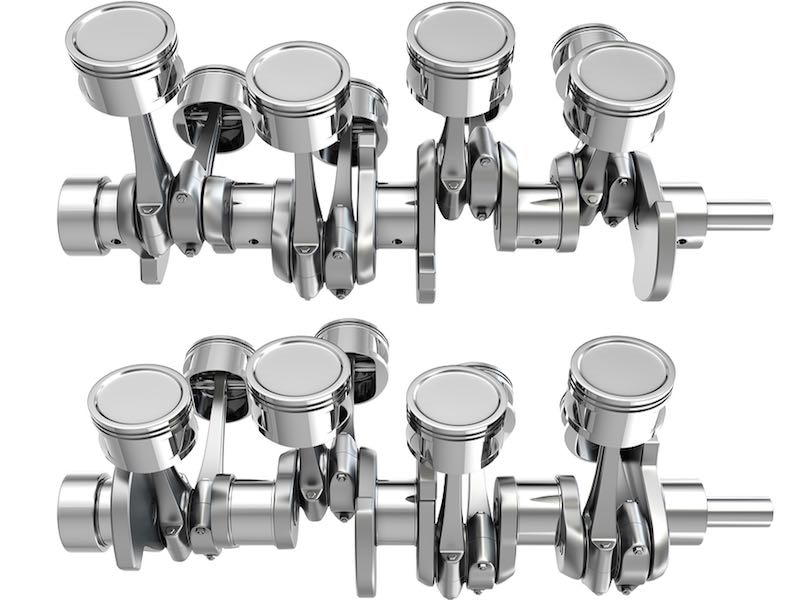Recent Articles
Popular Makes
Body Types
What is a Flat-Plane V8?

Have you ever wondered why American V8s and Italian V8s have distinctly different sounds? Among numerous differences in engine design, a main part of the sound difference comes from the design of the crankshaft.
Traditional American V8s (as well as numerous other V8s from around the world) use a cross-plane crankshaft, named because looking at it from the end it looks like a cross, or a +. The first and second crank journals are 90 degrees apart, the second and third are 180 degrees apart, the third and fourth are 270 degrees apart, and the fourth and first are again 180 degrees apart (90-180-270-180, for a total of 720 degrees, or two complete rotations, as in every four-stroke engine). This leads to the characteristic rough lopey idle and burbly sound that some people love, especially when the engines have been modified with larger cams. The main advantage of the cross-plane design is that secondary vibrations are half as strong (though twice as frequent), more easily allowing for larger displacements. The main disadvantage is that heavy counterweights are required to offset the rocking vibrations caused by plane imbalances, which generally cause cross-plane engines to be slower revving. Another disadvantage is uneven scavenging of the exhaust gases (though this can be countered with complex exhaust systems, like the “bundle of snakes” exhaust found on the legendary Ford GT40 race cars).
Some performance cars (and many race cars) use a V8 with a flat-plane crankshaft, named because from the end it looks flat. With this crankshaft design, every crank journal is 180 degrees apart from the next (180-180-180-180, again for a total of 720 degrees), leading to a smoother exhaust note. Because there are always twice as many pistons moving together as compared to with a cross-plane crank, secondary vibrations are twice as strong (though they can be offset using balance shafts), but no counterweights are required, so the crankshaft is lighter. This normally leads to quicker and higher revving engines. The cylinders also fire evenly from one bank to the next, ideal for exhaust scavenging.
If you are in the market for a sporty two-door car powered by a traditional American cross-plane V8, you can take your choice from among a variety of models, including the Chevrolet Camaro or Corvette, Dodge Challenger, or the Ford Mustang GT. If you desire the unique sounds of a flat-plane V8, your choices are a bit more limited (and more pricey), but include the Ferrari 458, Porsche 918 Spyder, McLaren 650S and P1, and the recently announced Ford Mustang GT350 powered by the 5.2-liter "Voodoo" V8.
